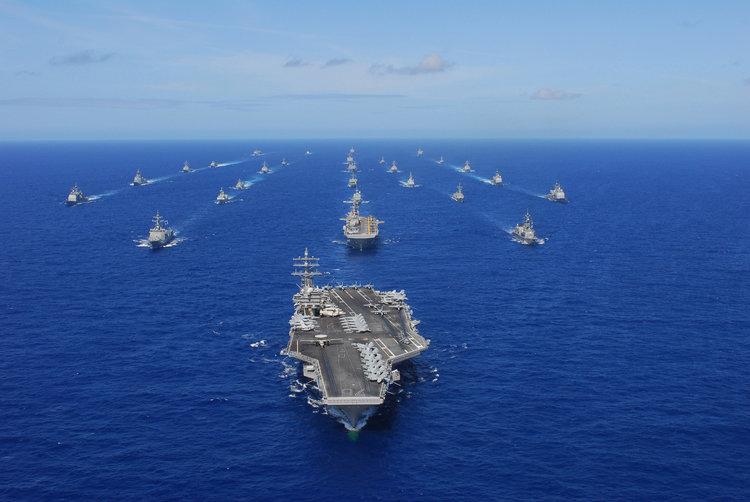As 3 US Carriers Patrol Western Pacific, Chinese Analysts Warn US-China Stumbling Toward War
Tyler Durden
Wed, 06/24/2020 – 20:45
No less than two new separate reports in The South China Morning Post are warning of a coming US-China military conflict, saying the prospect is now higher than ever given that amid a rising number of naval incidents, including a recent near-collision incident, communication channels used for deconfliction have fallen silent.
The observation is based in large part on new studies by China’s National Institute for South China Sea showing a steep drop-off in intergovernmental communications channels between the two sides.
This observed sharp decline in communication is also in regard to the military hotline between the Chinese and Taiwan defense ministries. No doubt the report was released in response the no less than three US carriers patrolling the western Pacific this week, including the USS Ronald Reagan, the USS Theodore Roosevelt, and the USS Nimitz. Needless to say, Beijing and the People’s Liberation Army (PLA) are pissed.
The SCMP cites Wu Shicun, the president of the National Institute for South China Sea Studies, who explains that “with Beijing and Washington locked in a rivalry on multiple fronts, the political distrust that had built up between them had led to hundreds of ‘track one’ intergovernmental communication channels shutting down.”
The deterioration in communications is traced to two years ago when the US rebuffed an invitation from Beijing to participate in major multinational naval exercises called ‘Rim of the Pacific’. The Pentagon had cited the Chinese PLA’s militarization of the disputed Spratly Islands in the South China Sea, also designed to assert expansive claims over what makes up Chinese territorial waters.
And further, Wu Shicun explains, “I think the risks of conflict are rising, especially after the near-collision between the USS Decatur guided-missile destroyer and China’s destroyer the Lanzhou in September in the South China Sea,” according to the report.
Video of the tense standoff and close call close-call was released at the time:
In a tense face-off in September 2018, the USS Decatur, which was performing a “freedom of navigation” operation, came within 41 metres (130 feet) of the Lanzhou close to Gaven Reef, which China claims as its territory, according to the US Navy, though Beijing accused the US of taking “provocative actions”.
On the same day as SCMP highlighted the breakdown in communications leaving a greater opportunity for Washington and Beijing to stumble into war via a future ‘mishap’ in waters off China, the same Hong Kong-based newspaper featured another similarly alarming report.
“US President Donald Trump needs China’s cooperation on the phase one trade deal, or a military conflict, to take his chances of winning re-election later this year to over 50 per cent, a Chinese investment brokerage has concluded after conducting modelling research using data since 1870,” the Tuesday report said.
Meanwhile, fears of a ratcheting Cold War level tensions as US carriers sail into the region.
The last time the Navy surged three carriers into the Pacific was in 2017. In 1996, the U.S. fleet famously sailed #USSIndependence and #USSNimitz and their battle groups near #Taiwan in response to Chinese threats against the island country. #IndiaChinahttps://t.co/fHAw6AWoG7
— Vaishali Basu Sharma (@basu_vaishali) June 19, 2020
“Led by Hua Changchun, a Shenzhen-based economist at the Guotai Junan Securities, the research claims Trump currently has only a 30 per cent chance of being re-elected in November against Democratic presidential nominee Joe Biden having studied previous US presidential elections.”
Hua sets up what he sees as the central Trump reelection dilemma vis-a-vis Beijing: “Trump may take extreme measures. He could either expand international cooperation, such as pressing China to buy American commodities in bulk, to help jobs and the economy, or he can opt for extreme military conflicts.”
